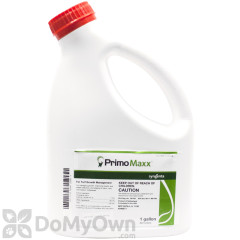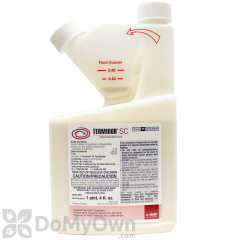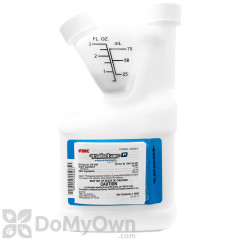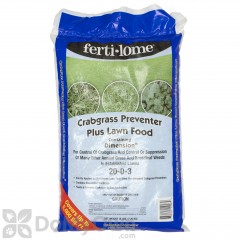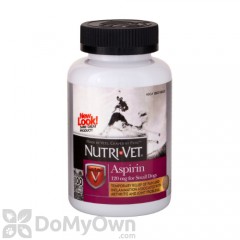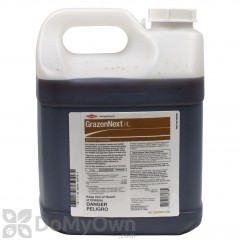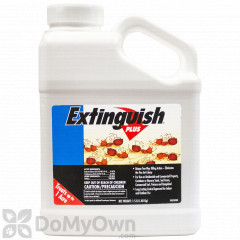
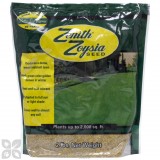
Have a Question? Ask Our Pros!
You May Also Need
-
Product Overview
Zenith Zoysia Grass Seed is a warm season lawn grass that grows well in full sun or under light shade exposure. Has good cold and drought tolerance and will form a dense and fine textured lawn. Provides a dark green and medium textured turf which is great golf courses, residential and commercial landscapes, and sports fields. This type of grass seed is suitable for low maintenance; requiring low watering and nutrition.
Store in a cool dry place for best results if not using in the purchased season. Do not allow product to get wet or dry out.
The 30lb size comes as a factory pack that has 1-6 lb bag and 12-2 lb bags for 30 lb total.
-
Details
For use in Residential Lawns in warm weather zones Application 1 - 3 lbs. per 1,000 sq. ft.
* See label for complete application instructionsShipping Weight 2.07 lbs Manufacturer Patten Seed Company (Mfg. Number: PN80) UPC 721104100204 Helpful Tips for Planting:
- Put seed down when soil temperatures are between 60 and 80 degrees
- Planting areas should get a minimum of 6-7 hours of sunlight
- For sandy soils, adding compost over the newly planted seeds can help the seed germinate and will also provide nutritious value to the dirt. It will also help keep the seed warm later in the season, or when temperatures are not ideal.
-
Product Documents
-
27 Customer Reviews
Top Reviews
Great lawns
By Dom on 07/28/2014
I would give this a 5 star except I have to consider the effort it takes. This seed makes a beautiful low maintenance lawn but getting it started is a great deal of time and planning. you must follow …
Read Full Review »I would give this a 5 star except I have to consider the effort it takes. This seed makes a beautiful low maintenance lawn but getting it started is a great deal of time and planning. you must follow the instructions and water water water until it is established.
So far no results
By Dj on 05/05/2020
 Verified Purchase
Verified Purchase
Purchase process and shipping/delivery time is 5 stars. But, So far overall it is 1 star. Planted seeds per seeding guidelines in south VA on April 10, now is May 5th and still there is no germina…
Read Full Review »Purchase process and shipping/delivery time is 5 stars. But, So far overall it is 1 star. Planted seeds per seeding guidelines in south VA on April 10, now is May 5th and still there is no germination. One week prior to seeding Zoysia I have seeded 5 Star Fescue Grass Seed Blend on opposite side of driveway and already mowed it 3 times. I will follow up with edit if there is a change.
If you seed and water properly, this is an amazing product
By Troy on 07/12/2021
People that are griping about this seed have screwed up somehow, no doubt in my mind. I screwed up horribly and had great results, and kept 1/2 pound of seed for the following year to fill in potenti…
Read Full Review »People that are griping about this seed have screwed up somehow, no doubt in my mind. I screwed up horribly and had great results, and kept 1/2 pound of seed for the following year to fill in potential bare spots and that aged seed germinated very well too. If you read to the bottom you'll see just how badly I screwed up, and I'll explain just how nicely my lawn turned out. What's required: - First, you need to know how many hours of sunlight the soil receives each day. Plants require sunlight to convert energy and if you do not have enough sunlight your plants are essentially on a diet, and that is bad for plants. - If you have adequate sunlight and soil temperatures for Zoysia, then next you'll want to do a soil test and make sure your pH is in an accurate zone. A local extension agency or store like Southern States or similar places may have soil testing. I strongly recommend getting a FULL soil test that tells you both the MACRO nutrients and the MICRO nutrients. You provide the sample, tell them what plant you are trying to grow, and they will tell you how much of each nutrient you need to be in an optimal range. I only did the MACRO nutrients, and I had great results. - 100% REQUIRED: ONCE YOU SEED, you need to keep the soil moist 24/7 for the first month. If your seed bed dries out, your seed will die. I'd bet money this is why so many people that gave bad reviews had a negative experience - I allowed about 500 sq. ft. of my lawn to dry out for about 1 day and that section died nearly 100%. I had a sprinkler fail, then the replacement sprinkler failed too. Zoysia isn't the only seed that will die like this, almost any seed you plant will die if you allow the seed bed to dry out. This is the biggest cause of lawn renovation failure in my opinion. - I allowed my lawn to grow tall and then I sprayed Glyphosate on my lawn, waited 10-14 days, then mowed as low as I could and I sprayed glyphosate again, then took the lawn down to bare soil as the directions stated. Then I also tilled the soil to make sure I did not have compact soil to contend with. - I was about to put down the seed at the end of July, but I checked the weather and there were bad rainstorms in the forecast so I waited a few days, and more rain was forecast so I waited a few more day, and this cycle repeated until I was about 45 days from the first hard frost and I had bare soil - I had no choice but to put my seed down and hope for the best. I didn't put soil over the seed either. I watered the soil to make it easier to work with and cut down on dust, and used a stiff back rake and went over my lawn in one direction, then again at 90 degrees so the top 1/2 of soil was loose. Then I put my seed down at about 1 pound per 1,000 sq. ft. which left me with 1 pound left over for spot seeding the following year. Then I turned my oscillating sprinklers on for about 5 minutes in each area and the loose soil covered the seed. I used a Scotts Wizz spreader and it worked well. The seed is so tiny I'd not recommend using a push spreader - you may end up with a lot of seed put out in a small area. One pound of seed per 1,000 sq. ft. is not that much, and the seed is extremely tiny. How tiny? I thought I may have issues with the birds, but I did not. The only seed I had stolen was by ants that picked it up and put it around the base of their ant hill. - Even planting only about 45 days before the first frost, which meant the soil temperatures were not optimal for Zoysia seed growth, I still had the beginning of blades sprouting after 7-8 days. All I put down on the soil was 10-10-10 fertilizer and Milorganite for some added organic matter to boost the soil and make it a bit more rich. Since the Zoysia takes about 28 days to fully germinate in proper planting conditions and temperatures, and I planted late, I did not have a well established lawn, but about 90% of my lawn survived the winter and came back the following spring. It filled out slowly while it was still cold, but after the weather warmed up to temperatures where Zoysia thrives, it started to fill out, spread and become more dense. By the end of that first full growing season my lawn was very nice, and I only put down about 2.25 pounds of nitrogen per 1,000 sq. ft., although I found out later I could have gone more the first year or two while the grass was establishing well and filling in. I'm starting my 2nd season of growth and the temperatures are now in the optimal range for growth and my lawn is very dense and filled in very well. My next door neighbor who works for the local Parks & Rec and is a professional turf manager and has an amazing lawn has been commenting on how beautiful my Zenith Zoysia lawn is and how thick it is, and the only thing I've done this year on my lawn is put down some Prodiamine (Pre-emergent) and one application of Milorganite which has some nitrogen, about 0.75 pounds per 1,000 sq. ft. when applied per the label. I've been so busy this year I've not had a chance to put down any fertilizer and my lawn is still looking amazing. So people who say the seed failed, I disagree. If I planted so close to the first frost and my lawn is thriving so well, I find it really difficult to believe the seed is the reason their lawns are not thriving. - My lawn is doing that well, and I live near Richmond, VA, which is in the transition zone, or in weather that can grow both warm season and cool season grasses, but it's not cool enough or warm enough to be optimal growing conditions for either. - If you plant this seed in the spring after the soil temperatures are at least 60-65 degrees (SOIL TEMPS, not the air), then you should have great results and a nearly perfect lawn by the time the growing season ends. I've had one full growing season and my lawn is amazing. I wish I could post photos here as proof. There is nothing mystical about growing Zoysia. If you follow the directions, have ample direct sunlight, ample water and do not allow the seed bed to dry out, have a soil test and properly fertilize, you'll have an amazing lawn. I say to plant in the early spring when the soil temps are in the low to mid 60's because it is easier to keep the soil moist, and as the seed is becoming established, you'll be reaching the optimal temperatures for the grass to thrive and spread. My lawn is nearly 100% weed free. The only negative I have is that warm season grasses do not stripe as well as cool season grasses. Cool season grasses hold more water and are less hardy/tough, so they are easier to push over and get the desirable stripes if you want to go that far. Warm season grasses are thicker in blade in many cases and tend to pop back up when you try to stripe them. You can get stripes for sure, just not quite as well as cool season grasses. - I also love this Do My Own site. Not only do they have almost every pesticide I have ever needed, This is also the only site I can find the full label for anything I want to research. I tend to upset vendors on other sites because people will ask questions and I'll post a link to the full label from this site. It's my personal opinion that anybody selling a pesticide should be required to list the full label on the website for customers so they know what they are buying and how to use it before making the purchase. -
32 Questions & Answers
Helpful Q&A'sQHow long does it take Zenith Zoysia Grass Seed to seed and become established?Assuming you plant correctly in the appropriate season with the recommended amount of sunlight and watering.APer the package for Zenith Zoysia Grass Seed it should germinate in 2 to 3 weeks. It can take a year or so to get established.
QCan you plant Zenith Zoysia in the fall in the Southeast?AThe Zenith Zoysia Grass Seed is recommended to be applied in the spring.
QCan I reseed with Zenith Zoysia Grass Seed over exiting Fescue lawn?APer the manufacturer the Zenith Zoysia Grass Seed, you cannot seed with this product over an existing lawn. You would need to completely kill the current lawn to have bare ground, till the soil and…
Read Full Answer »Per the manufacturer the Zenith Zoysia Grass Seed, you cannot seed with this product over an existing lawn. You would need to completely kill the current lawn to have bare ground, till the soil and apply according the complete instructions on the label provided on the bag.
